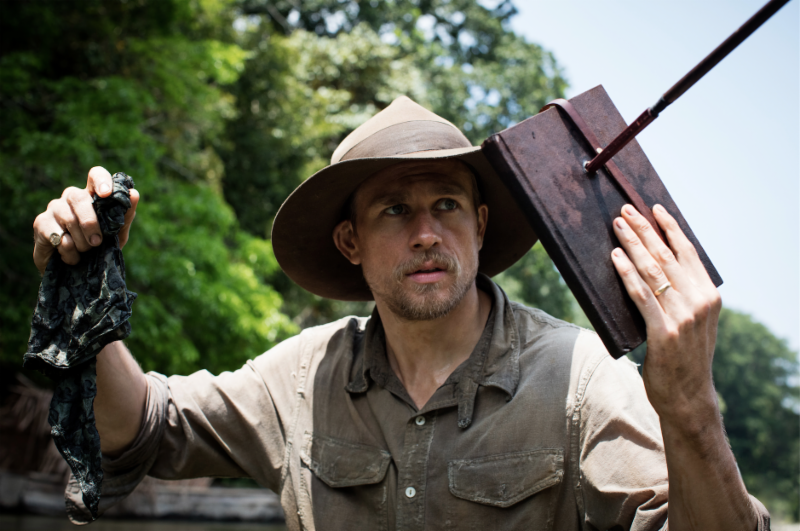‘The Lost City of Z’ Revives the Historical Epic Film
Courtesy of Aidan Monaghan / Amazon Studios & Bleeker Street
Charlie Hunnam as the British explorer, Colonel Percy Fawcett, in the cinematic rendition of David Grann’s Amazonian epic, “The Lost City of Z.”
April 13, 2017
A group of British explorers travel along an Amazonian river in a bamboo raft. All of them are drenched in sweat, unbathed and famished, but nevertheless persist in their journey. Concealed in the bushes, a native tribe commences an onslaught of arrows aimed at the explorers’ boat. The arrows soar through the air, one after the other, without a moment of relief. The British explorers dive into the water, narrowly escaping death in an environment where they are clearly the enemy.
“The Lost City of Z” is a cinematic triumph in an age when epics are not nearly as loved as they were in the Golden Age of Hollywood. Based on the nonfiction book of the same name by David Grann, the film recounts the extraordinary tale of Percy Fawcett (Charlie Hunnam), a British explorer who devotes the latter half of his life to searching for a lost city deep in a South American jungle after finding remnants of an ancient civilization. Fawcett faces strong opposition by those who deny the existence of a developed people — who they believe to be savages — that predates their own. Fawcett’s is a story of obsession and a quest for dreams.
The films visuals are its most striking feature. From scenes in the exotic Amazon jungle to the bloodied trenches of World War I, “The Lost City of Z” is able to evoke a sense of realism in the mystical world it portrays. Director James Gray demonstrates a profound feel for atmosphere and setting, which gives the film an authenticity that respects the original source of the story.
To embark on his expeditions, Fawcett has to make numerous sacrifices, including forgoing time with his family. However, his wife Nina (Sienna Miller) is always supportive of his explorations, even offering to join him in the jungle. Both Hunnam and Miller infuse the film with excellent and committed performances that bring the audience into their characters’ lives. In a smaller role, Robert Pattinson plays Henry Costin, Fawcett’s right-hand man who accompanies him on his explorations. Pattinson effortlessly blends into his character, hidden by an unruly beard and flimsy spectacles.
The film brings up an important question — was Fawcett pursuing an improbable dream? Perhaps it was for honor, but had he achieved that honor, would it have outweighed the sacrifices he had to make? Fawcett often borders on the narrow line between obsession and fascination, forcing the audience to reconsider the worth of discovering his elusive lost city.
In 1925, during his third expedition into the jungle, Fawcett and his son disappeared and were never found. “The Lost City of Z” successfully honors his history and attempts to convince the audience of the significance that this ancient civilization held for him.
The film not only manages to convey Fawcett’s undying persistence, but also shows the melancholic nature of his unfinished narrative. For decades after his death, his theories and beliefs were largely considered foolish, but “The Lost City of Z” resurrects and validates a man who may have been right after all.
“The Lost City of Z” opens in theaters April 14.
Email Daniella Nichinson at [email protected].



























































































































































